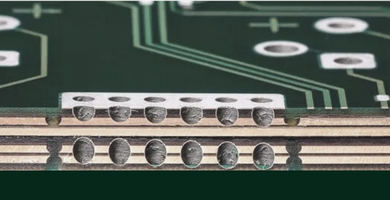Overview About Embedded Systems
Now a days there are several development platforms based on microcontrollers to start your study of embedded systems. Some of them are for high performance with many I/O pins, A/D converters and connectivity ways, others, with low cost hardware or even DIY.
Embedded systems
An Embedded systems is a microcontroller-based hardware with software designed to perform a specific function in a part of a system or as an independent system. The core carries out the computation taking the input data from the peripheric, like keybords and sensors, as example, and send out the results using the user interface or using an electric, electronic or electromechanical actuator.
The complexity of an embedded system depends on the task for which is designed, and the cost depends on the hardware and processor performance. In general, those who want to start studying this topic usually start using a development kit.
Development kits
In the last years microcontrollers manufacturer and 3rd party have produced development kits for improve learning curve and popularize their products. These development kits are designed to have all the basic hardware necessary for plug and play, preventing the user from having to assemble the power supply and communication circuit with the computer that contains the software and the Integrated Development Environment (IDE).
Some of the development kits have many modules that can expand their functions or even provide external hardware to speed up the development time, making the developer spend more time with programming than with the electronic circuit. Figure 1 shows the Arduino UNO board and Figure 2 shows some expansion modules, named shields.


As the development kits, the most IDEs are freely distributed by the microcontrollers manufacturer and 3rd party, since their purpose is to sell the hardware.
Which development kit should I get?
The most popular development kits are based on the Arduino platform. They are low cost, easy to access and a large community of developers who provide many articles forum discussions, libraries and code examples, which made the learn curve quicker. These characteristics make the Arduino platform an excellent candidate for beginners in embedded systems.

There are many Arduino boards that provide 8- to 32-bit Atmel and ARM processors. They are well documented, and the IDE is very intuitive to use. Usually developers use C/C++ language for programming, but you can use other languages in different IDEs. When searching you will find people programming in python, C# or XOD, for example.
Microchip has a famous and large family of microcontrollers, signals controllers and microprocessors. Perhaps the best known is the PIC line, that provide 8- to 32-bit processors.

Due to time in the market, kits are well established and documented, and many automation systems use Microchip devices. learned to program using a PIC16F628A, in Assembly. But nowadays, several programming languages are supported by the manufacturer’s IDE, or by third parties, as well as in the case of the Arduino platform.
Texas Instruments owns the LaunchPad platform which provide a large family of hardware and boards for embedded systems. Its development kits have microcontrollers and digital signal processors ranging from 16 bit to 32 bit. The devices used in the LaunchPad dev kits are great performers and the boards are well assembled.

Documentation for development kits is all available, however, for those who know nothing about microcontrollers and embedded systems, starting to learn can be a challenge. The IDE is stable and brings great development features for programmers with some experience.
In addition to microcontrollers and signal processors, Texas Instruments produces a multitude of devices that can be used in conjunction with an embedded system.
Conclusion
There are many boards and development kits for embedded systems, in this article only a few of them were presented. Some platforms are more dedicated to beginners and allow connection to many peripherals in a very intuitive way and a quick learning curve, due to the availability of didactic resources from the developer community. This is the case of the Arduino platform.
Texas Instruments products are dedicated to high-performance system development and, while well documented, still don’t have a lot of study material for beginners. For those who already have some knowledge on the subject, they will really like the power that LaunchPad has.
PIC Microchip portfolio is well known and widely used in simple as well as complex industrial and drive systems. There are many books and resources available for those who want to start learning, as the Arduino, and they have high-performance microcontrollers and produce other devices that can be integrated into the embedded system.

